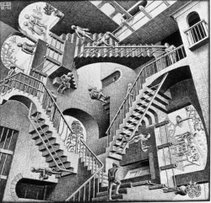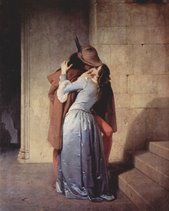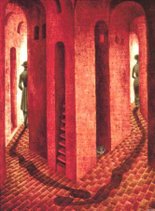
I fell in love with this writting system since I "discovered" it. It is FULL of meanings! Sensefull meanings everywhere!
Hangul was promulgated by the fourth king of the Joseon Dynasty, Sejong the Great. It is an artificial script in the sense that it was created from scratch by (most probably) a group of people. Hangul (한글) is a term coined by Ju Sigyeong in 1912 that simultaneously means great (한) script (글) in archaic Korean and Korean script in modern Korean. Contrary to what many may think Hangul is a phonemic alphabet. It is organized into blocks of at least two of the 24 jamo (자모) (a jamo is one of the units that make up the Hangul alphabet. 자 means letter or character, and 모 means mother, so the name suggests that the jamo are the building-blocks of the script): at least one of the 14 consonants and one of the ten vowels.
The jamo are:
- 14 simple consonant letters: ㄱ, ㄴ, ㄷ, ㄹ, ㅁ, ㅂ, ㅅ, ㅇ, ㅈ, ㅊ, ㅋ, ㅌ, ㅍ, ㅎ, plus obsolete ㅿ(alveolar),ㆁ(velar),ㆆ,ㅱ,ㅸ,ㆄ
- 5 double letters (glotalized): ㄲ, ㄸ, ㅃ, ㅆ, ㅉ, plus obsolete ㅥ,ㆀ,ㆅ,ㅹ
- 11 consonant clusters: ㄳ, ㄵ, ㄶ, ㄺ, ㄻ, ㄼ, ㄽ, ㄾ, ㄿ, ㅀ, ㅄ, plus obsolete ㅦ,ㅧ,ㅨ,ㅪ,ㅬ,ㅭ,ㅮ,ㅯ,ㅰ,ㅲ,ㅳ,ㅶ,ㅷ,ㅺ,ㅻ,ㅼ,ㅽ,ㅾ,ㆂ,ㆃ, and obsolete triple clusters ㅩ,ㅫ,ㅴ,ㅵ
- 6 simple vowel letters: ㅏ, ㅓ, ㅗ, ㅜ, ㅡ, ㅣ, plus obsolete ㆍ
- 4 simple iotized vowel letters (semi consonant-semi vowel): ㅑ, ㅕ, ㅛ, ㅠ
- 11 diphthongs: ㅐ, ㅒ, ㅔ, ㅖ, ㅘ, ㅙ, ㅚ, ㅝ, ㅞ, ㅟ, ㅢ, plus obsolete ㆎ,ㆇ,ㆈ,ㆉ,ㆊ,ㆋ,ㆌ
Hangul uses distinct strokes to indicate distinctive features such as place of articulation (labial, coronal, velar, or glottal) and manner of articulation (plosive, nasal, sibilant, aspiration) for consonants, and iotation (a preceding i- sound), harmonic class, and I-mutation for vowels. This is just incredible as each jamo is telling you what sound it represents!! You can tell the difference between ㄱ and ㅋ (both velar), but there is no way of telling between Latin letters g and k (here, the shape of the letter means absolutelly nothing).
Vowel letters are based on three elements:
- a horizontal line representing the flat Earth, the essence of yin
- a point for the Sun in the heavens, the essence of yang (this becomes a short stroke when written with a brush)
- a vertical line for the upright Human, the neutral mediator between the Heaven and Earth
Except for a few grammatical morphemes in archaic texts, no letter may stand alone to represent elements of the Korean language. Instead, jamo are grouped into syllabic blocks of at least two and often three: a consonant or consonant cluster called the initial, a vowel or diphthong called the medial, and, optionally, a consonant or consonant cluster at the end of the syllable, called the final. When a syllable has no actual initial consonant, the null initial ㅇ is used as a placeholder (no placeholder is needed when there is no final). That is, a syllabic block contains a minimum of two jamo.
This script is fascinating. I suggest taking a look at korea.net, this short tutorial and this tutorial. In order to type the jamo, go here.











No comments:
Post a Comment